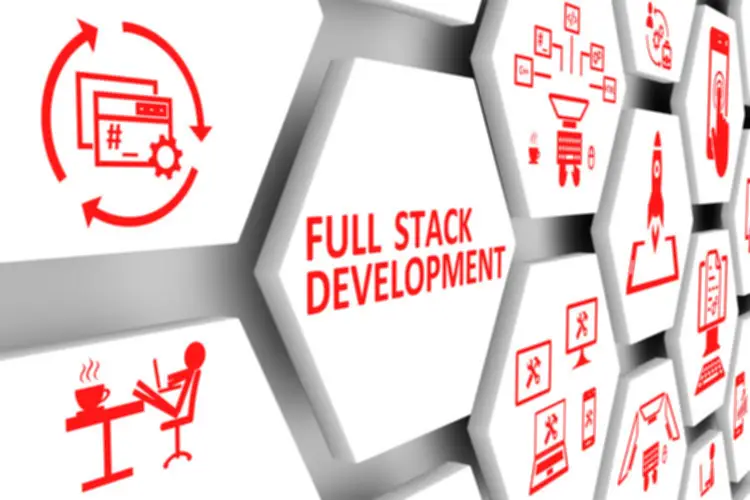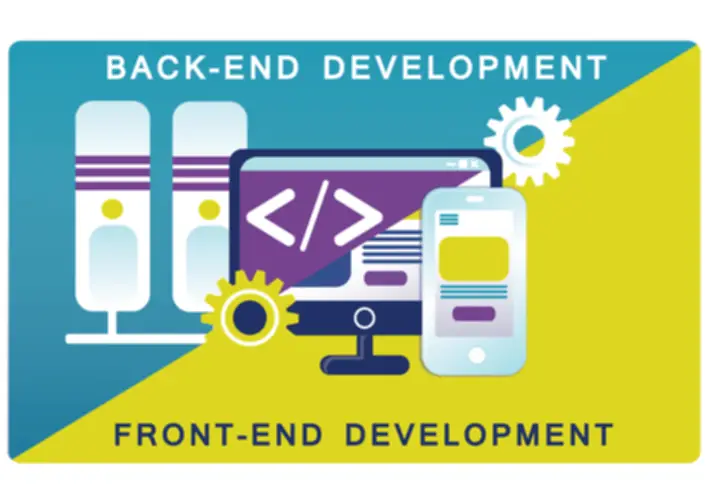Airbyte pipelines can help streamline your information ecosystem by centralizing knowledge from all related sources, databases, and functions. Information engineers can also build customized connectors in minutes for his or her unique use cases. The doc database has been efficiently implemented to drive knowledge operations in main world companies, with MongoDB Atlas being used by Forbes, Toyota, Vodafone, and more. PostgreSQL makes use of a vertical scaling technique to manage vast amounts of information and improve write scalability by including hardware sources corresponding to disks, CPUs, and memory to current database nodes.
MongoDB Atlas helps multi-region and multi-cloud deployments throughout 115+ areas on AWS, Google Cloud, and Azure. With zoned sharding, Atlas permits location-aware storage, ensuring information may be saved in particular geographic areas to meet data sovereignty and compliance necessities for globally distributed purposes. MongoDB implements Role-Based Access Control (RBAC), allowing fine-grained control over user permissions. In MongoDB Atlas, roles are assigned at each the organization and project levels, defining access to cloud assets and MongoDB deployments. At the database degree, roles govern particular permissions for actions on collections or databases.
Conversely, MongoDB presents essential options like authentication, authorization, and knowledge encryption. For an in depth have a glance at MongoDB’s security features, refer to its security documentation (opens in a brand new tab). PostgreSQL makes use of streaming and logical replication to ensure data availability. MongoDB ensures excessive availability via replica sets, where every set consists of a primary node and a quantity of secondary nodes.

Safety And Compliance
Nevertheless, PostgreSQL additionally has the power to scale horizontally by way of strategies similar to desk partitioning and replication, though it requires more effort and cautious planning in comparison with MongoDB’s built-in sharding. In MongoDB, sharding includes splitting the info into smaller, extra manageable chunks which would possibly be distributed across completely different servers. These chunks are based on a shard key, which determines how the info is partitioned. Each shard holds a portion of the dataset, and MongoDB can add extra shards because the system scales, guaranteeing high availability and fault tolerance.
In PostgreSQL, sharding is achieved through international information wrappers, which let you access information from distant servers as if it were native. Whereas this will provide some level of scalability, it’s not as robust as MongoDB’s sharding capabilities. In PostgreSQL, indexing relies on the columns of a table, permitting you to create indexes on particular columns or mixtures of columns. This could be extra efficient for queries that have to filter or sort information based on particular columns.
Mongodb Vs Sql Server: Which Is Better? 10 Critical Differences

MongoDB excels in scenarios where flexibility, scalability, and real-time analytics are essential, making it well-suited for functions like content administration systems, IoT platforms, and cell apps. The article serves as an in-depth guide for builders and businesses facing the pivotal decision of choosing the proper database management system (DBMS) for his or her tasks. It meticulously dissects the differences between MongoDB and PostgreSQL, two of essentially the most prominent DBMSs available today. This comparison covers a extensive range of aspects, together with options, use circumstances, efficiency, extensibility, safety, and price, offering readers with a complete understanding to assist their decision-making course of. For applications that require more superior scalability, PostgreSQL helps logical replication and streaming replication, permitting you to create read replicas to distribute read loads throughout multiple machines.
For instance, GIN indexes are highly environment friendly for full-text search and indexing advanced information sorts similar to JSON, arrays, and hstore. This question first creates a temporary outcome set (RecentOrders) and then makes use of it to perform a more readable and efficient JOIN with the customers https://www.globalcloudteam.com/ table. These kinds of superior features are the place SQL actually shines, particularly when coping with advanced datasets in enterprise environments.
The newest model of MongoDB has new features, such as assist for automated data archival, delete operations, and time collection dataset distribution across shards. Launched in 2007, MongoDB now serves some of the world’s largest companies, together with EA, eBay, and Shutterfly. Organizations like Chat2DB (opens in a model new postgres vs mongo tab) utilize each databases, leveraging PostgreSQL for structured interactions and MongoDB for dealing with diverse datasets. Non-public Endpoints enable one-way connections from cloud suppliers like AWS, Azure, or Google Cloud to Atlas clusters.
Group Help And Ecosystem
- MongoDB has a strong community of customers and contributors who present boards, documentation, tutorials, and other resources to help builders get began with the database.
- On the opposite hand, should you run both databases on a singlenode, then those distributed features in MongoDB turn into an overhead.
- This signifies that operations affecting a single document are assured to be atomic, either the complete operation succeeds, or it fails with out leaving the document in an inconsistent state.
- B-tree is the default index kind in PostgreSQL, and it works properly for most range queries and equality checks.
- MongoDB uses BSON (Binary JSON) format to store knowledge, which is extra intuitive for developers and permits them to store varying structures inside a group.
Whereas SQL could be more verbose and complex than MQL, it presents a rich set of options for querying and manipulating knowledge. PostgreSQL stays a strong selection for structured, relational information and complicated transactional techniques, whereas MongoDB provides unparalleled flexibility and scalability for dynamic and large-scale functions. By understanding their strengths and limitations, you presumably can choose the database that greatest aligns together with your project’s needs. MongoDB’s structure uses paperwork, which are the same as data in relational databases but can hold more advanced and various constructions. PostgreSQL is an object-relational database management system that makes use of tables, rows, and columns to retailer data. PostgreSQL ensures transactions are atomic, consistent, isolated, and durable (ACID).
And even among the relational database group, Postgres ismore rigorous than different peers like MySQL. MongoDB has tried to solve this by introducing multi-dimensional data sorts the place you presumably can embed one document retailer inside one other. However, it’s disorganized and not as elegant as the easy be part of Explainable AI operate that PostgreSQL incorporates. Thus, MongoDB is sort of useful in instances the place you wish to retailer documents inside a flexible information subject.
This is a complicated approach that permits a quantity of transactions to work together with the database concurrently with out interfering with each other. This command creates a B-tree index on the e-mail column, enhancing the velocity of queries that search for users by their e mail address. B-tree is the default index type in PostgreSQL, and it actually works properly for many vary queries and equality checks. This schema-less approach makes MongoDB good for scenarios the place the construction of your information is unpredictable, rapidly evolving, or non-uniform throughout different data. PostgreSQL additionally comes with open-source code and is supported by the IT group. This ensures assistance from experienced professionals on boards and common updates.
MongoDB’s query language, MongoDB Query Language (MQL), resembles JSON syntax, making it intuitive for builders to retrieve and manipulate data. Moreover, MongoDB’s extensive documentation, vibrant group, and wealth of on-line resources contribute to a supportive ecosystem that facilitates studying and problem-solving. PostgreSQL is a 100% free and open-source ORD (object-relational database) that dates back to 1987, making it considerably older than MongoDB. As An Alternative of storing knowledge like documents, the database stores it as structured objects. MongoDB Atlas, its managed cloud service, takes extensibility further by offering App Services, including schema validation, triggers, and serverless capabilities.
MongoDB is good at handling unstructured information whereas PostgreSQL is best fitted to structured data with advanced relationships. It stores information in dynamic JSON-like paperwork and supports straightforward query, manipulation, and storage of knowledge. MongoDB is a superb selection when your software offers with information that does not have a set or predefined structure. It allows you to store data as JSON-like documents, making it straightforward to accommodate modifications and additions to your data mannequin with out affecting current data. Numerous benchmarks have shown that PostgreSQL outperforms MongoDB for data warehousing and knowledge evaluation workloads. However in evaluating JSON operations between PostgreSQL and MongoDB, there are benchmarks that present an advantage for both databases.

Indexes are a sort of data structure that may store a really small amount of data in an easily readable form. They are just one part of a be a part of and make your information simple to know and, thereby allow you to to resolve any queries with ease. There are different benefits of using Integrate.io when selecting between MongoDB vs. PostgreSQL. The platform has a unique pricing mannequin that expenses you for the number of connectors you use and not the info you consume. Plus, you’ll be able to access world-class support and profit from over one hundred out-of-the-box connectors that move information between relational databases, transactional databases, customer relationship administration (CRM) methods, and extra. Its versatile document mannequin, based on BSON (Binary JSON), aligns properly with modern programming paradigms and eliminates the need for complex object-relational mapping (ORM) layers.
VPC/VNet peering permits safe, direct communication between your MongoDB Atlas deployment and your software tier, whereas IP whitelisting restricts access to particular community segments. This approach permits PostgreSQL to make use of partition pruning, that means it only scans relevant partitions throughout queries, decreasing the quantity of information processed and enhancing performance. Whereas it doesn’t have automated rebalancing like MongoDB’s sharding, PostgreSQL’s partitioning can nonetheless handle giant datasets successfully within a single node. The shard key’s essential in balancing the data load, as it defines how documents are assigned to totally different shards. MongoDB mechanically manages knowledge distribution and question routing by way of a mongos course of, which acts as a question router that directs requests to the correct shard.
